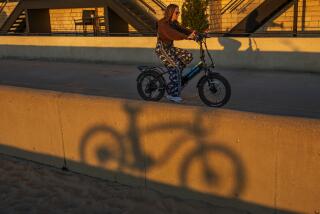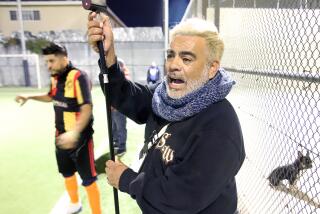In cycling-obsessed Colombia, he dreamed of glory. But first he needed a bike
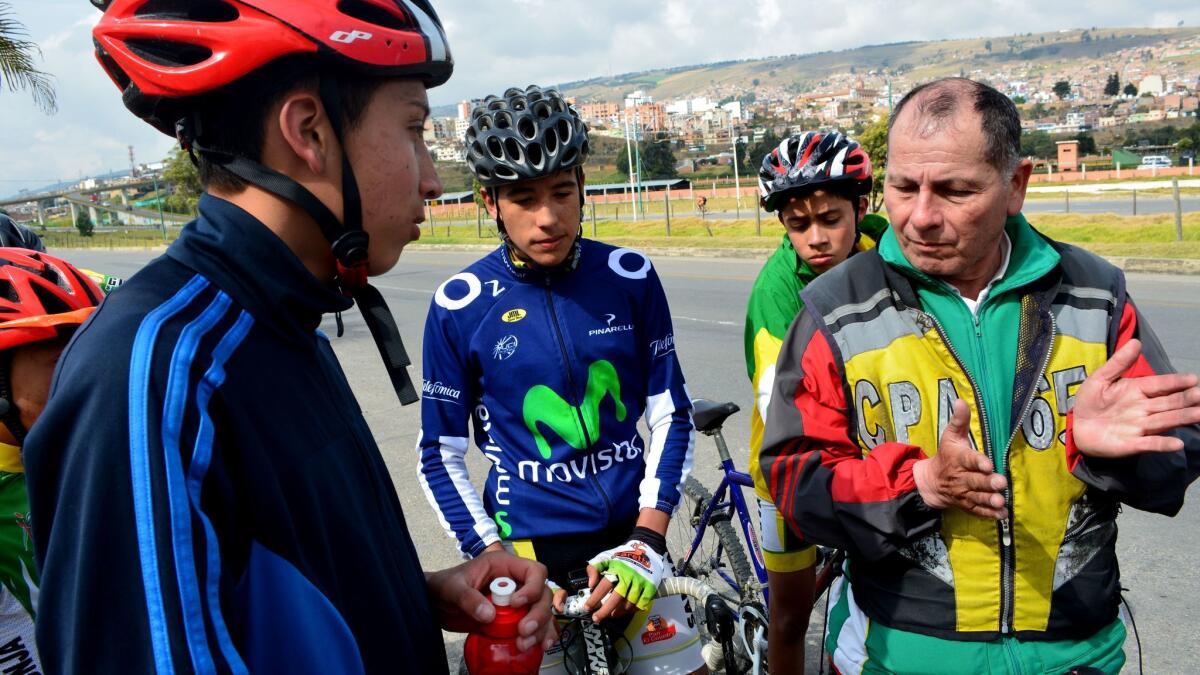
Steven Motavita was 13 when he bought a mountain bicycle to compete in local road races. It was cheap, with a heavy aluminum frame and fat tires unsuited for competition, but it was all he could afford with the money he made harvesting potatoes with two uncles who once shared his great cycling ambitions.
Riding along steep highways in the Colombian countryside, he soon met another young cyclist and learned about the Santiago de Tunja cycling club, a ragtag group of aspiring riders who gather most Saturdays under the shadow of a towering concrete soccer stadium in this colonial city.
Motavita joined the team that week and won his first race a month later, bringing home a tiny plastic trophy that he keeps on a wooden nightstand.
“My dad was so proud,” Motavita said, beaming. “And look, it’s so small.”
But it wasn’t long before the coaches stopped signing him up for races. He wasn’t performing.
“My teammates all had better, lighter bikes,” he said. “The coach would tell me, ‘You’ll get crushed out there.’”
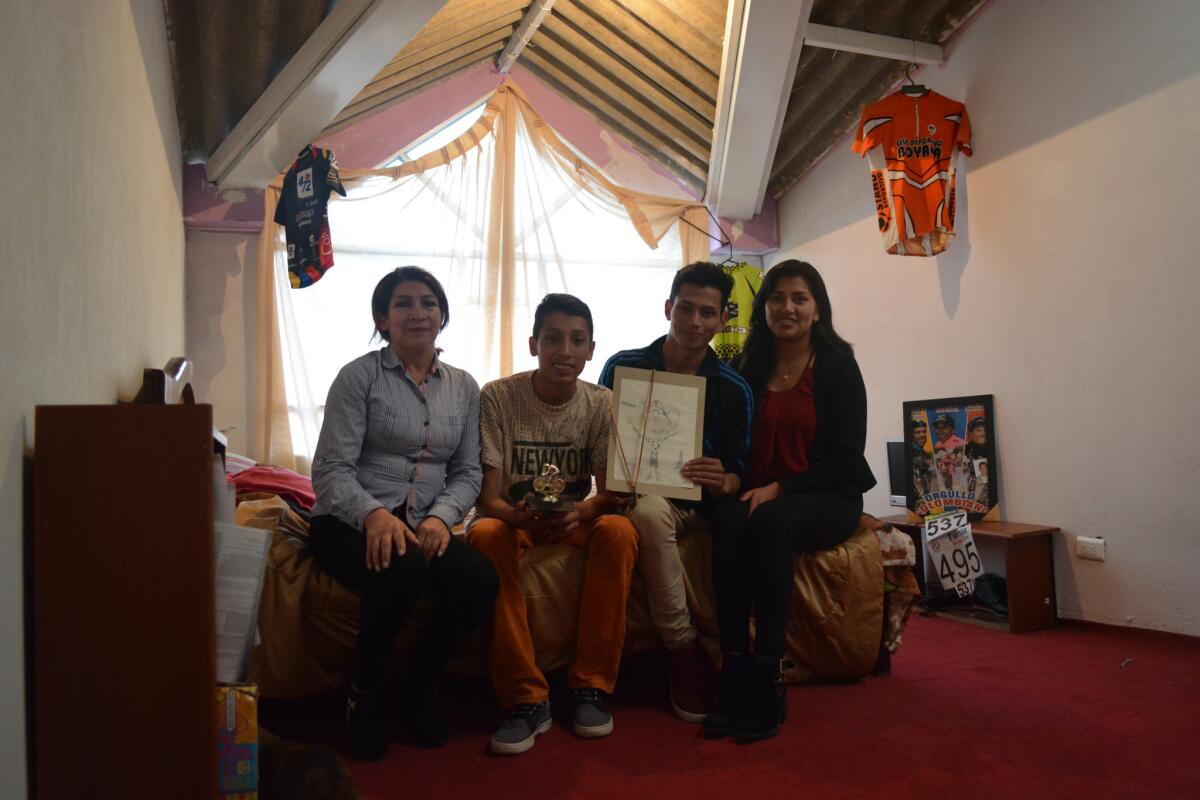
In a nation consumed by soccer, and where a civil war raged for more than 50 years, there have been scarce resources to fund national sports leagues, let alone professional cyclists.
A race-worthy bicycle can cost several thousand dollars, out of reach for many in a country where the average monthly salary is roughly $700. Nearly 40% of people still live below the poverty line in rural areas.
Yet a surprising number of Colombian road racers have ascended into the highest levels of an elite, insular and mostly European sport. Many are dubbed escarabajos, or beetles, for their prowess riding quickly up steep mountains.
By some measures, the first wave of glory began in 1984, when Luis Alberto “Lucho” Herrera, flanked by screaming fans, became the first Colombian to win a stage of the Tour de France.
But the successes dulled within the decade as violence and drug trafficking racked the country. Now, with a temporary peace accord enacted in 2016 after five years of negotiations, Colombians are back. They are once again a disproportionate presence in professional cycling, stacking up victories over the past five years in top races across Europe. In the Tour de France this year, seven of the 198 riders were from Colombia, compared with three from the U.S.
Many of these racers hail from rural, mountainous regions, including the state of Boyaca, where altitudes top 10,000 feet. Here in its capital, Tunja, a city of roughly 200,000 two hours north of Bogota, children grow up pedaling on mountain roads to school in a wet and windy climate, conditions that build endurance from an early age.
They dream of following in the path of the current cycling icons.
Those include Rigoberto Uran, who was 14 when paramilitary troops assassinated his father, and who went on to win a silver medal in the 2012 Summer Olympics and finish second in this year’s Tour de France. There are also rising stars like Miguel Angel Lopez, who won his first World Tour race last year, and Egan Bernal, who signed on with the coveted Team Sky.
But in Tunja no hometown hero is more adored than Nairo Quintana, or “Nairoman,” revered for his sustained attacks on sharp ascents and widely predicted to someday win the Tour de France, where he has twice placed second.
Before all the international victories, Quintana was a member of the Santiago de Tunja cycling club.
Lino and Fabio Casas run the team. The coaches, referred to as professors in Colombia, ask only that students arrive on time, with their own bicycles and gear, and “con ganas,” or with desire, to learn and succeed. There is no charge. The brothers and former professional cyclists fund the school with whatever donations they can scramble together.
“More than good cyclists, we are trying to grow good people,” Fabio Casas said. “We hope the discipline of the sport will stay with them for whatever they go on to do next.”
But left off the race rosters, Motavita saw little point of staying in the club. So he quit about six months after he joined.
He’d return to the club if he ever could afford a better bicycle.
His family could not help. His older brother, Duvan, then 18, had been fighting a rare bone cancer and was hospitalized in Bogota, where his left leg was amputated. His parents, divorced years earlier, struggled to afford the constant trips there on top of everyday expenses.
Motavita had to move in with his grandmother for a time.
Over the next two years, he continued to train alone on his clunker. But he lost a lot of motivation — for cycling, for school, for everything.
“It was hard on our whole family,” Motavita said.
::
Motavita grew up with a single mother in the small, rural town of Viracacha, nearly 10 miles from Tunja.
He started cycling when he was about 8, and his two older siblings say they soon noticed his flair for the sport. By the time he was 11, he began racing with an old, steel bicycle his dad had bought him to go to school, recruiting a cousin his age to ride with him to competitions in neighboring towns.
“He always knew where the next race was,” his sister, Carolina, remembers.
He knew the life stories of cyclists by heart, spending hours online researching the careers of Colombian stars.

The current generation of champions is not entirely homegrown. Plucked away at young ages for their raw talent, they are trained instead with the latest emerging technology, including multimillion-dollar wind tunnels, in countries like Spain and Germany, and they often cycle under European brands.
Although their triumphs have opened some doors for others, aspiring Colombian riders first have to go at it with little, if any, support.
If Colombia is to have its own winning team, “there just needs to be more support from the government for these kids,” said Marceliano Pulido, 58, vice president of the cycling club. He calls cycling “a sport for the rich practiced by the poor.”
At a recent panel discussion in Bogota, up-and-comer Winner Anacona, another Santiago de Tunja alumnus now on Quintana’s team of Movistar, stressed that no one else in the sport — not even Quintana — helped him get to where he is.
“Everyone, in the end, I think makes their own opportunities,” Anacona said.
Parents can risk everything to pay for bicycles, gear and training, and children face tremendous pressure, often seen as “the salvation” of the household, athletes said. Once they make it to European teams in their teens and early 20s, the young men must find their own places to live.
The only factor that can propel young cyclists past the obstacles, former professional cyclists like Santiago Botero said, is their own hunger for the sport.
“The loneliness can be brutal,” he said.
There were many days Motavita thought he would have to give up. He wasn’t practicing much during the time Duvan was sick, and the brothers had drifted apart.
Duvan Motavita says he first felt the pain in his knee when he was 17. After the amputation and rounds of chemotherapy, he relapsed and had to go through radiation treatment.
“All the attention was on me,” he said. “Steven was alone.”
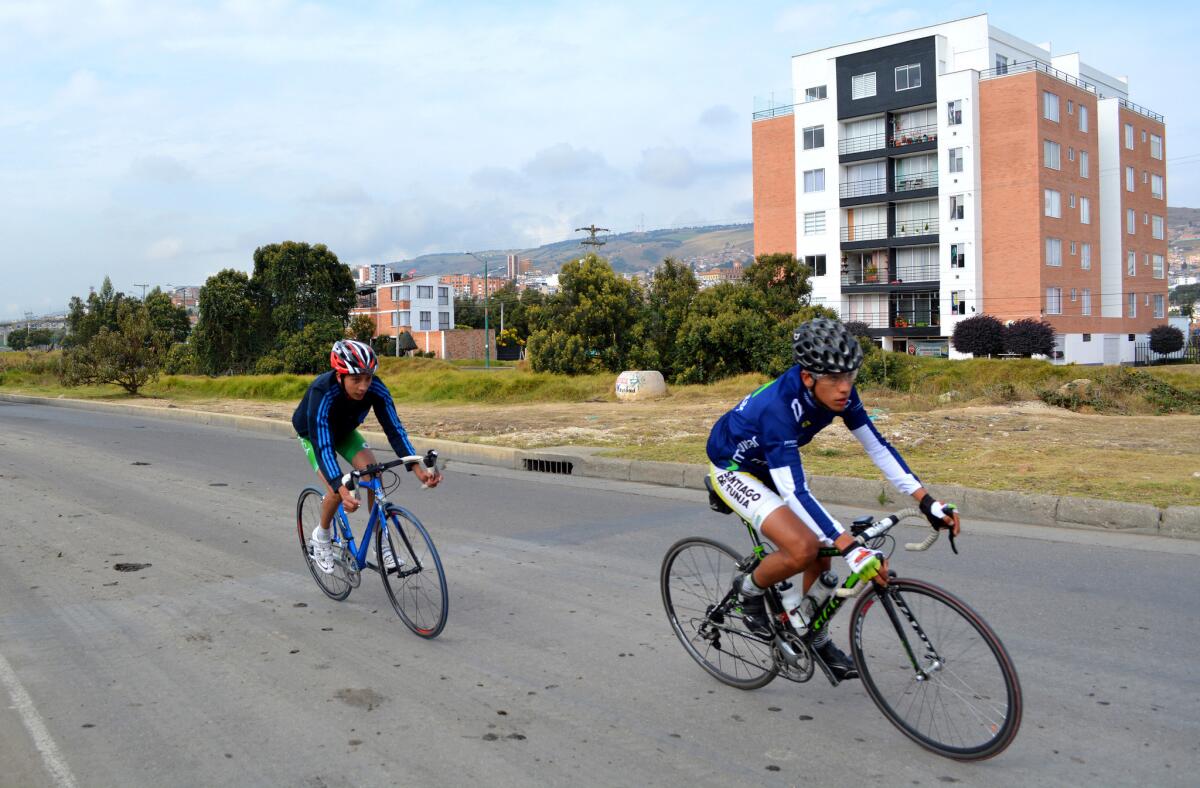
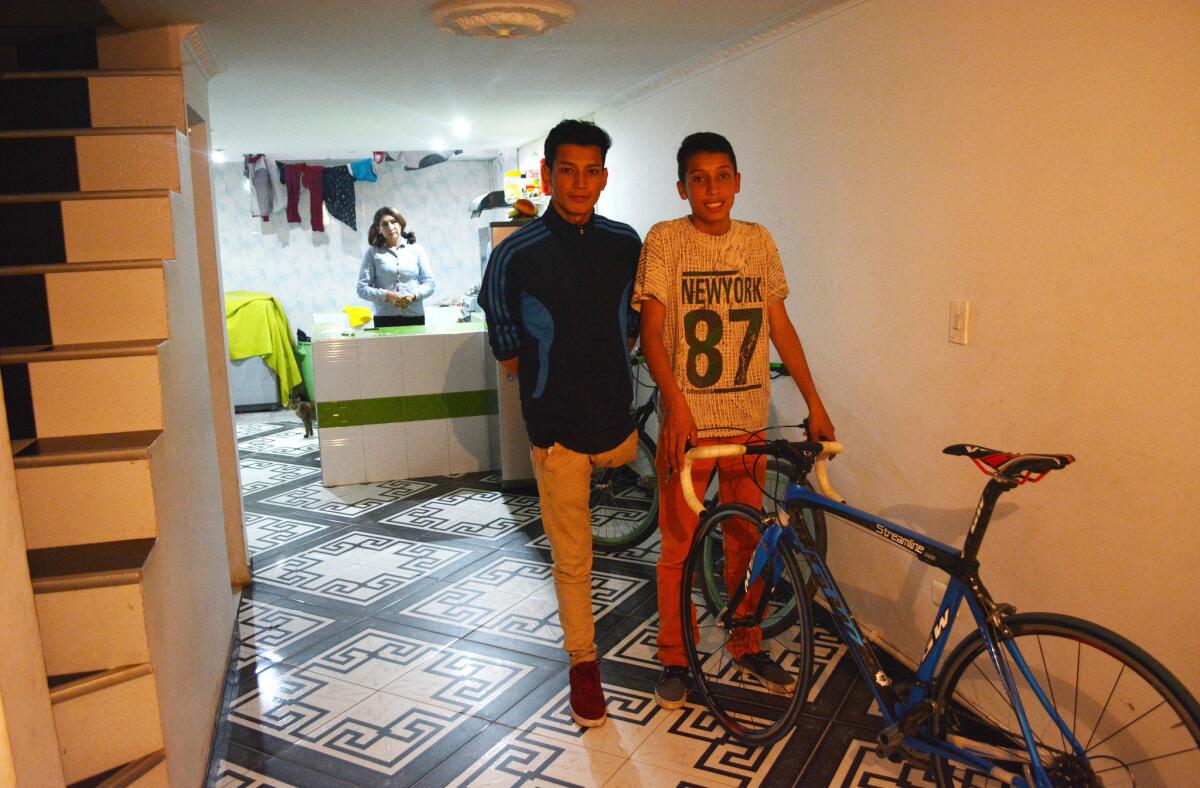
Roughly two years after he quit, Motavita made his return to the Santiago de Tunja cycling club.
He was 16, taller and stronger, but still lean enough to charge up the mountains. On weekdays, he wakes around sunrise to train, pedaling the 40-minute distance from Siachoque, where he now lives with his father, to his school in Soraca.
His coaches tell him he has potential but warn that Motavita needs to train more. Boys his age must ride about 250 miles a week. He averages about half that.
He has struggled to afford a helmet, cycling shoes and other essential gear, as well as proper nutrition. Only recently did his mother, Maria Elvira Perez, realize she could not serve her son potato soup before practice — “he tells me he feels weighted down.”
The sport is rough on the body, and it is dangerous sharing narrow roads with traffic. Some days, Motavita comes home bruised from falls. He tells his family it is a small price to pay.
“One suffers a lot, but I keep chasing the dream because I want to make it big,” Motavita said. “I want to get myself and my family ahead.”
On an overcast morning in late October, Motavita was one of the oldest in a boisterous group of more than a dozen boys decked in bright helmets and neon Lycra.
They hit a mountain highway, gliding past stone and adobe homes clustered on rolling hills. Sheep grazed below an underpass. Industrial trucks roared by them, blowing dust and black exhaust that stung the eyes.
There’s one thing that’s made all the difference, though.
Duvan returned to Tunja two years ago, healthy and nimble after three years of cancer treatment. Then he embarked on a project.
He reared and sold a litter of piglets, and coaxed their father, an electrician, and mother, a janitor, to see if they could contribute some money to the enterprise he had in mind. Sister Carolina, a secretary, also helped out.
It wasn’t quite enough. The family had to take out a $300 loan from the bank, which Motavita pledged to repay. He found a job earning $50 a month at a pig farm, though it would require him to cycle 25 miles out there each Sunday to feed the animals and clean their sty.
Bit by bit, the family managed to raise nearly $1,000.
Now, as Motavita makes his way up the steep roadway, he is no longer plodding on heavy steel and fat tires. He pumps up the mountainside on a bicycle made of blue carbon fiber — not new, but new for him. It is light and stiff, the machine of his dreams.

ALSO
Lance Armstrong’s lies carry a steep, and rising, price
Warren Barguil delivers France a victory on Bastille Day at the Tour de France
Wild or mild, these bike rides are among the best in the West (and Iowa)
Half a century of conflict in Colombia comes to close as FARC rebels disarm
More to Read
Start your day right
Sign up for Essential California for news, features and recommendations from the L.A. Times and beyond in your inbox six days a week.
You may occasionally receive promotional content from the Los Angeles Times.
